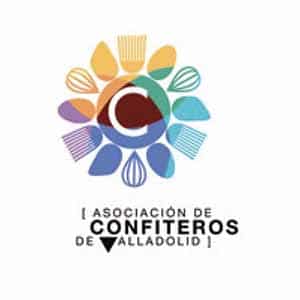- Eight female directors, actresses and producers took part in the 1st Meeting of Women Filmmakers, co-organised with CIMA and ECAM Industry, in the auditorium of the University of Valladolid
- Among the conclusions of RTVE’s Equality Observatory, announced at the encounter, the increased quality of the projects presented due to the incorporation of more women producers was highlighted
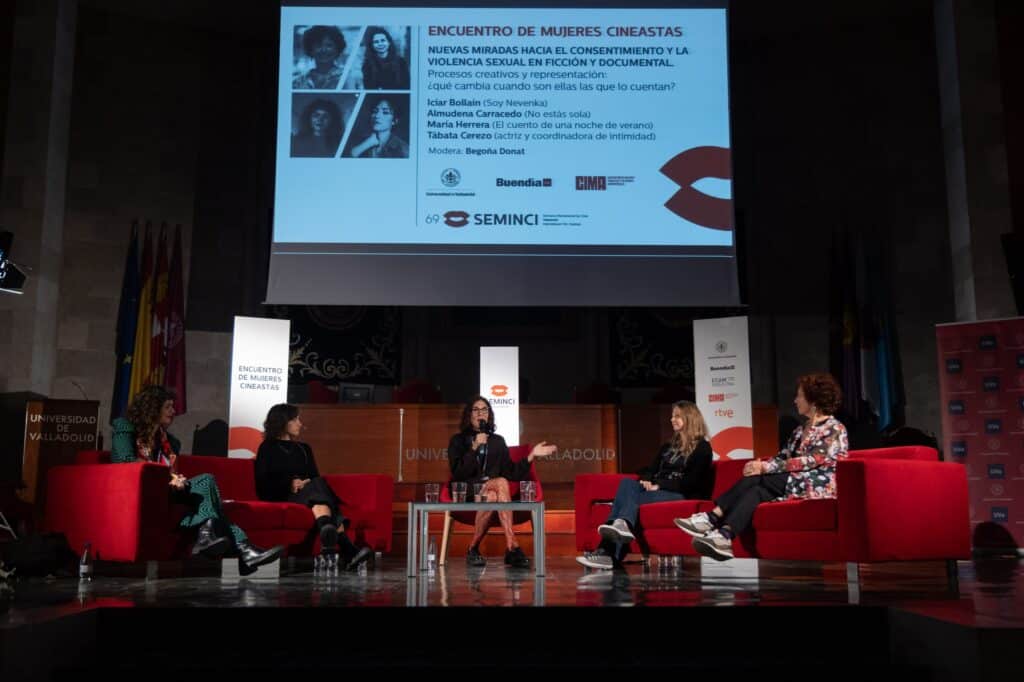
Valladolid, 24 October 2024. The challenge of generational change and the representation of sexual violence in film within the changing environment of the audiovisual industry served as a starting point for the exchange of opinions between directors, producers and participants in the Meeting of Women Filmmakers, co-organised with ECAM Industry and the Association of Women Filmmakers and Audiovisual Media (CIMA), in collaboration with the Buendía Centre, in the auditorium of the University of Valladolid. This meeting, open to the public, revolved around the theme ‘What happens when they take the floor? The transformative power of women in film, creatively and organisationally’.
As part of a future roadmap for Spanish cinema, three female directors who have recently reflected sexual and gender violence in their productions, Icíar Bollaín (Soy Nevenka), María Herrera (Cuento de una noche de verano) and Almudena Carracedo (No estás sola), and the actress and intimacy coordinator Tábata Cerezo reflected on how to change the way in which consent and sexual violence are reflected in fiction and documentaries. In order to modify the cinematographic imaginary that has existed until now, with the aim of including greater diversity and fighting against the fetishisation of the image of women.
‘We have been seeing the male imaginary on screen for too long, where women are objects of desire’, denounced the filmmaker Icíar Bollaín, who in 2003 with Te doy mis ojos already questioned why a woman spent an average of ten years with an abuser before separating. Cinema generates an imaginary, but it can also transform consciences’, added Almudena Carracedo, director of the documentary No estás sola, which she uses as a tool for reflection on La Manada: ‘We want to shed light on the patriarchal processes that influence the process; when you put all the pieces of the puzzle together, people understand why’.
From her experience as an actress and intimacy coordinator, analysing how sexuality is reflected in fiction and how it impacts on the imaginary, on the construction of desire, Tábata Cerezo acknowledged that she sometimes finds herself in conflict: ‘We work at the service of the director’s gaze, but there is an ethical line of not perpetuating rape culture in products aimed at young audiences’. In her opinion: ‘Although we film sexual violence to denounce it, the more we eroticise the image, the more we contribute to the opposite’, and she recalled the famous rape scene of Monica Bellucci in Gaspar Noé’s Irreversible, which has become one of the most visited scenes on porn websites. ‘We have evolved a lot as an audience, but it’s hard to break down the myths’, she said.
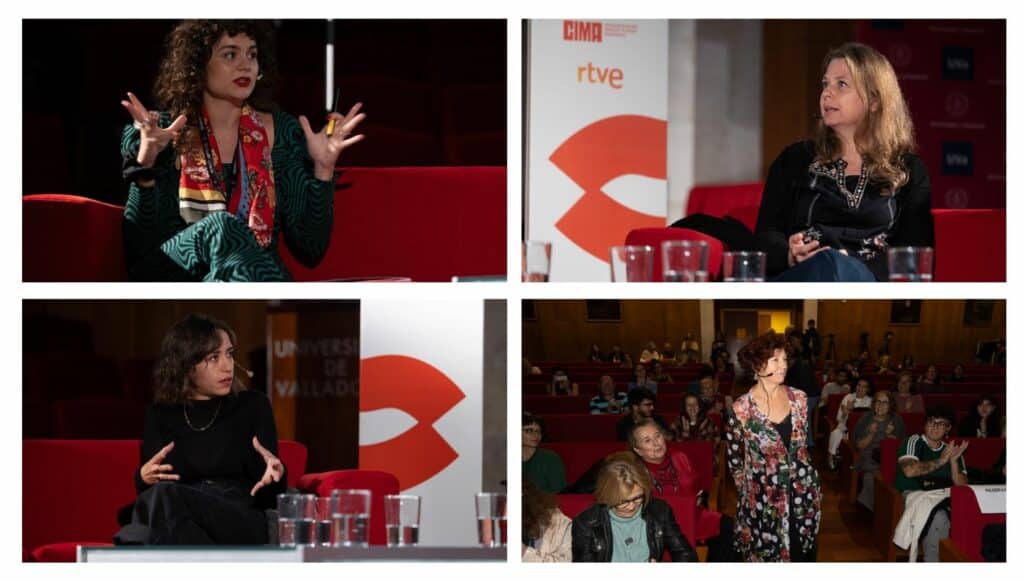
Both Almudena Carracedo, and in the case of Bollaín with her film about Nevenka Fernández, the councillor who faced harassment by the mayor of Ponferrada almost 25 years ago, approached their projects with a sensitivity that is not usual in projects directed by men. They first considered whether it was necessary to tell the story, then asked the protagonists for permission to do so, deciding which details of the story belong to the victim and which to the audience, and adapted the process to the pace of the people, which slows down the production; in short, introducing the same respect in the process as in the subject.
The next thing to change, according to the filmmakers, is the way sexual scenes are shot, which is especially important if they include violence. ‘Depending on how you shoot it, you can make it romantic, or even exciting,’ Bollaín warned about how to reflect the lack of consent. The young director María Herrera chose not to re-victimise women through aesthetics in her short film, a reflection of a personal experience, which she presented at this edition of SEMINCI, Cuento de una noche de verano. Not only did she depict rape in a non-ugly setting but the rapist is not just an unpleasant person on the screen either. ‘This short film is the one I would have liked to have seen to be able to identify what was happening to me at that moment,’ she explained. ‘It is difficult to identify if you have suffered sexual violence; no one wants to be a victim,’ she added.
Tábata Cerezo’s work as intimacy coordinator focuses, above all, on talking and rehearsing with the actors prior to the sex scenes so that uncomfortable or even violent situations are not generated during the filming due to improvisation and the embarrassment of talking about sex in the face of the false myth that actors have no modesty. In this sense, Almudena Carracedo pointed out that directors must be respectful with the actors when filming sensitive scenes and not only think about extracting the best performance from them.
How to reflect sexual violence without falling into the perpetuated gaze, how to place the camera or represent consent, how to make the stories and the aggressors more complex are debates that, according to Icíar Bollaín, are still pending: ‘We don’t have an answer to how to deconstruct the gaze or referents; we are constructing it now. It is not easy to find a new language, you make it up as you go along’. Nevertheless, the director was pleased that more and more imaginary ones are being seen. Although there is still a lot of work to be done. ‘There have to be more voices and, when we women tell our story, we have to do so by stripping ourselves of the visual education we have learned.
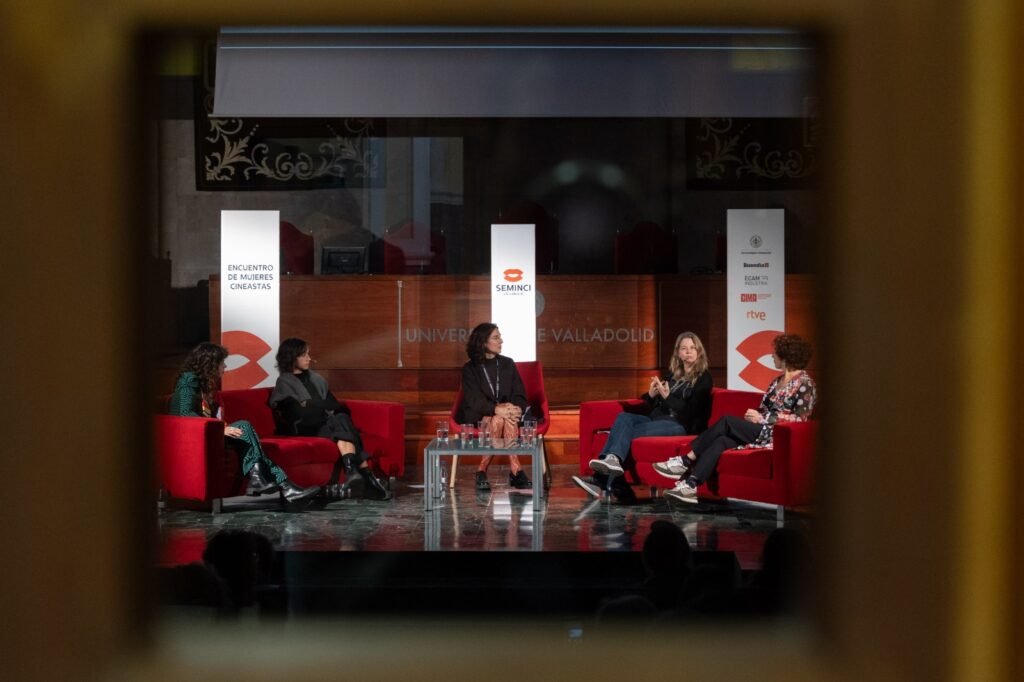
The future of independent production
Among the changing gazes are also the women involved in production. As the participants in the technical round table ‘The future of independent production: challenges for the changeover’, co-organised with ECAM Industry, agreed, the more women join this function, the more the collective imaginary will change, because women producers not only look for funding, but also for talent and promote projects. ‘We have to understand the figure of production from a 360º point of view’, warned Marisa Fernández Armenteros, who from her production company Buena Pinta Media has produced films such as Cinco lobitos, by Alauda Ruiz de Azúa and Un amor, by Isabel Coixet.
‘Independent producers bring young talent forward,’ agreed Sara de la Fuente, founder of Mammut Films. For the young producer, who has supported award-winning projects at festivals such as Sandra Romero‘s Por donde pasa el silencio, ‘producers are catalysts for issues that are talked about in film, and I find that those of our generation are not represented’.
In this sense, another representative of the generational change in Spanish production is Silvia Fuentes, producer of O corno, by Jaione Camborda, Golden Shell for Best Film at the San Sebastian Festival. The promoter of the Galician production company Sétima lamented the centrality of the audiovisual industry and advocated for producers’ associations as the common space from which to share points of view in order to understand the past, present and future of the sector.
She also discussed her experience with project incubators as a forum for bringing creators into contact with the industry. A platform that Marisa Fernández Armenteros also praised as a showcase for the presentation of new scripts. ‘We are not inaccessible. We need to find films’, she announced. Although she acknowledged the lack of diversity in the work presented to the industry and her desire to see more comedies represented among the selection. ‘I don’t want to produce Cinco lobitos 2 or find an Alice Rohrwacher. Find your own approach,’ she warned young screenwriters and directors.
She then also recalled that the public funding model limits the number of projects per year that each producer can submit. ‘The reality now is that the box office is a lottery and the margin for error is zero for independent productions. Cinema rivals other forms of entertainment and now cinema is seen in different windows; this has made it necessary to reposition the pieces’, and she delivered a message: ‘If the big companies want to co-produce with small ones, let them do it for real, not just by contributing money and appearing on the red carpet’.
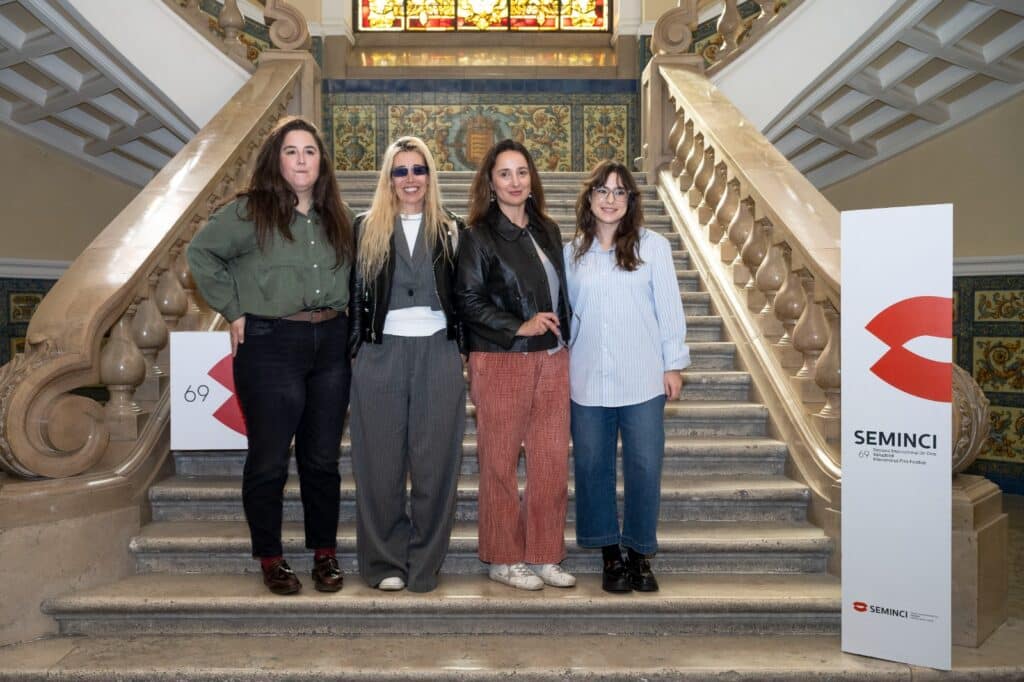
‘The excel has become complicated,’ added María Luisa Gutiérrez, founder of Bowfinger International Pictures and CEO of Amiguetes Enterprise, the production company behind blockbusters such as Santiago Segura’s Padre no hay más que uno, in reference to balancing the budget of a production. ‘Costs have gone up because of the war in Ukraine and new labour agreements. Rights also cost more, and it is more complicated for the platforms’, he lamented, as well as raising his voice in favour of recovering institutional support for independent producers, who were a reference in Spanish cinema. ‘Back then they were supported; now it seems that only the platforms are supported, as they create many jobs, and there are also many jobs that depend on independent talent. In order for a creative to later work for a platform, an independent must have previously backed them. And we are the ones who lose everything if the project fails financially’.
Even so, Mª Luisa Gutiérrez defended her decision to set up her own production company: ‘If you work for someone else, you become like a waiter who does what the audience asks for. On the other hand, as independents, we can do what we want, be different and bring diversity to Spanish cinema. I prefer to have my own little bar’.
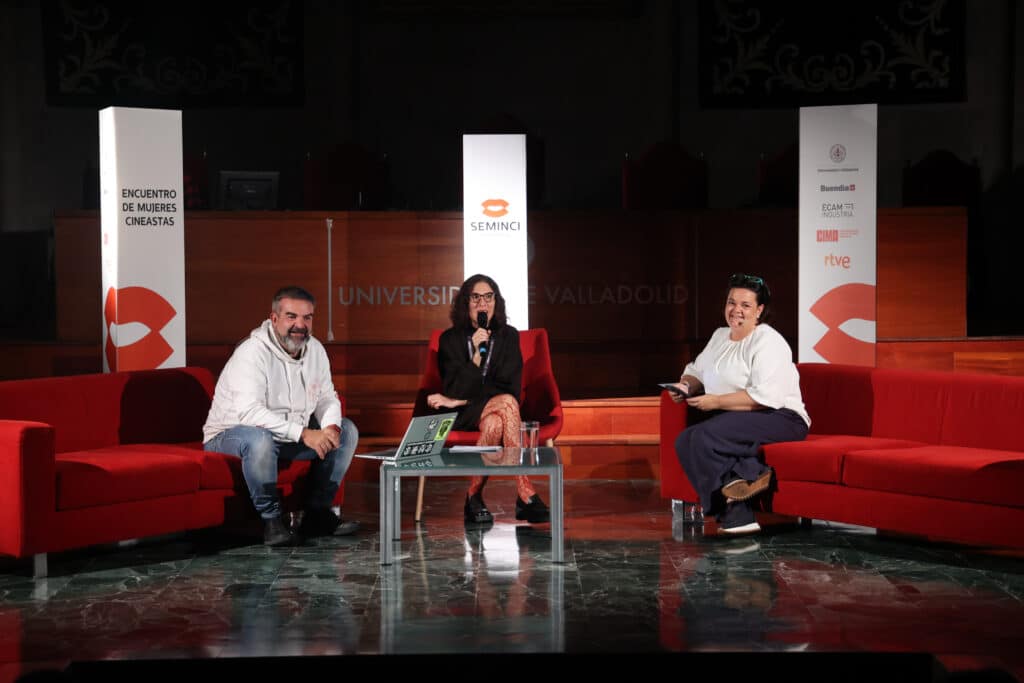
RTVE Equality Observatory
The Meeting of Women Filmmakers organised by SEMINCI also served as a forum for the presentation of the conclusions of the Equality Observatory created by RTVE in 2018 to monitor content and guarantee respect for equality rights. Presented by Nekane Acha, RTVE’s Equality Delegate, and the Deputy Director of Cinema of the Fiction and Film Department, Gervasio Iglesias, both recalled the measures developed by RTVE in favour that have contributed to the current emergence of Spanish cinema directed or created by women.
One of the measures included in the State Pact against Gender Violence calls for the incorporation of measures related to equality and the prevention of gender violence in the selection made by RTVE’s Film Committee among the film projects whose production is co-financed by RTVE. To cover this measure, the Bechdel Test has been incorporated into the scripts studied to assess the aid.
The study, which is carried out without the readers of the scripts knowing who the project belongs to, assesses criteria such as the presence of women as producers or directors, the presence of female characters as protagonists, the promotion of gender equality in their plots, diversity or the fight against gender-based violence.
Among the 2022 projects, of the 80 projects selected, 38.74% were directed by women, close to the desired 40% and the percentage of women who submitted projects for selection. In the 2023 film roundtables, of the 75 projects selected, there were 27, 36%. In 2024, 260 projects were submitted in the area of fiction and film, 68 of them directed by women, 26.15% less than in 2022 and 2023, although the percentage of those approved has increased: of the 62 approved, 23 belong to women, 37% of the total. If documentaries are added, the overall percentage rises to 39%, which exceeds the minimum 30% established by the General Law on Audiovisual Communication of 2023.
According to Gervasio Iglesias: ‘The presence of female producers is fundamental to the increase in the quality of the projects presented by women. If it hadn’t been for the fact that many women have joined the difficult task of production, many films would not even have been considered’.
As Begoña Donat, the moderator of the event, summed up, the fact that there are more women in all sectors of the film industry allows for a change in the way we look at things. ‘Hopefully the National Film Award to María Zamora, the second producer to receive it, will open the way for more stories to be told from the perspective of diversity, periphery and gender’.
Press contact:
983 42 64 60 prensa@seminci.com
www.seminci.com/

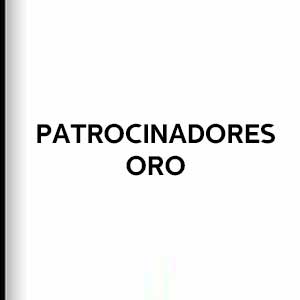



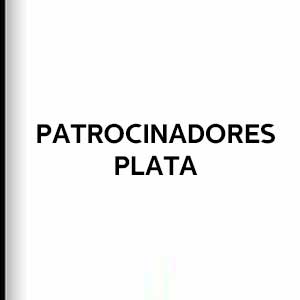



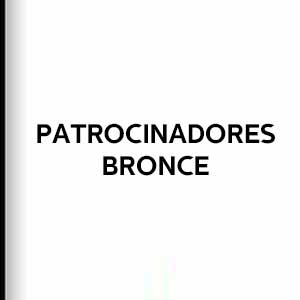









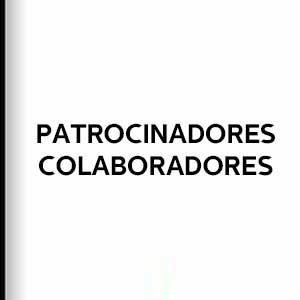


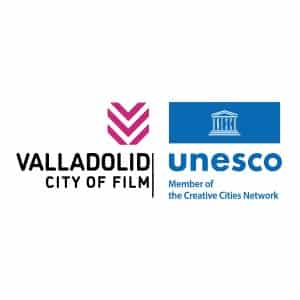
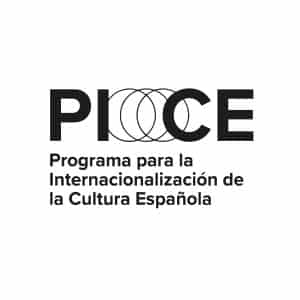



![Logo Foro Cultural de Austria Madrid[1]](https://www.seminci.com/wp-content/uploads/2024/09/Logo-Foro-Cultural-de-Austria-Madrid1-300x76.jpg)




